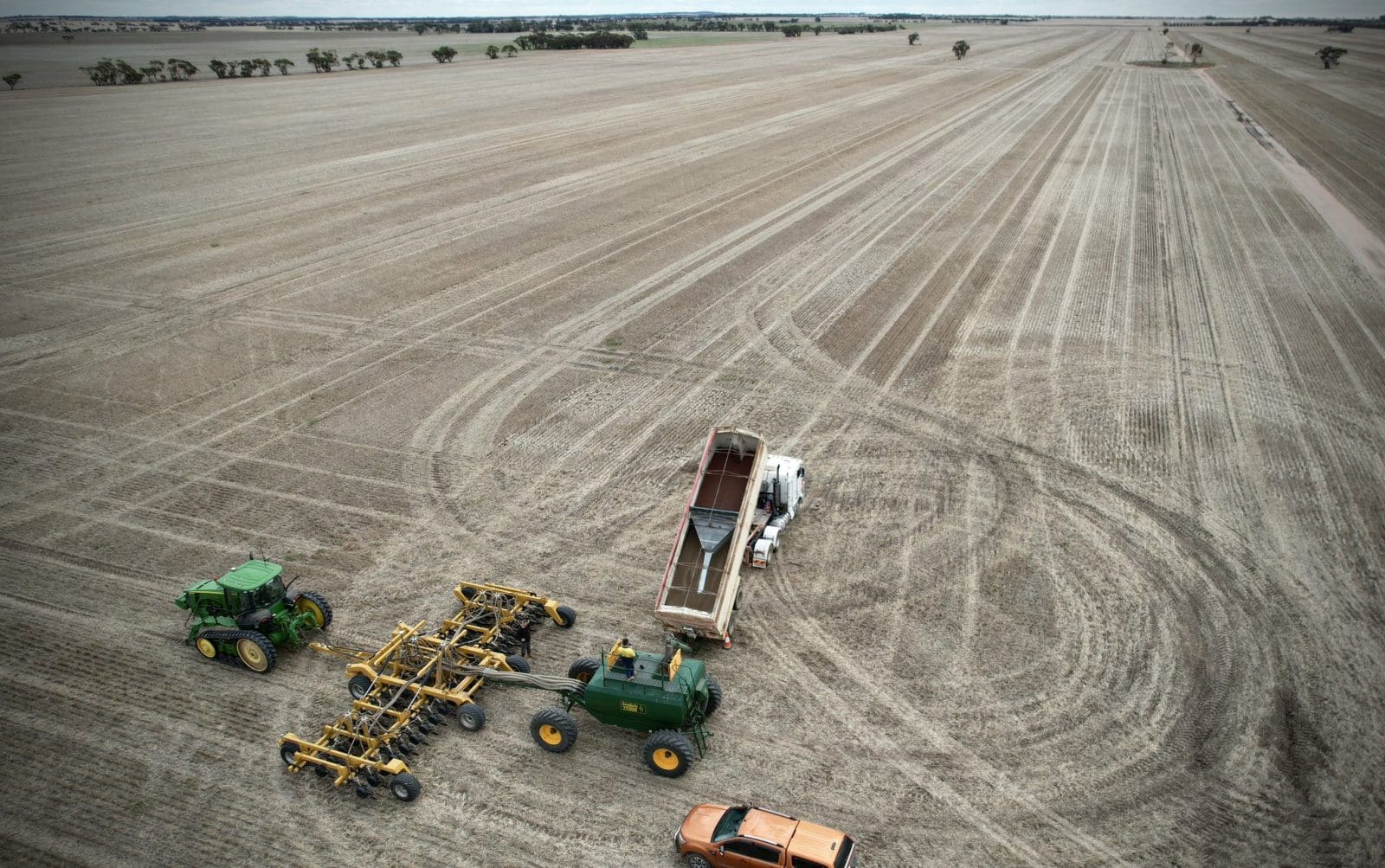
Growers across southern Australia are planting early crops like vetch pictured here going in in the Wimmera. Photo: Matt Rohde
SOWING of Australia’s 2024-25 winter crop is under way in all states of Australia amid mixed conditions.
Very early indications are that only 3 percent of the national area has been planted to date, and most of that is grazing crops like oats and vetch, plus some early canola.
Growers generally like to open their main-season planting on April 25, Anzac Day, but agronomists say those who have just had rain, or are happy to sow dry, are making an early start.
Australian Crop Forecasters has released its preliminary estimates for the crop now being planted, and puts national wheat area at 13.6 million hectares (Mha), up from last year, barley at 4.4Mha, up 3pc, and canola at 3.2Mha, down 4pc.
“It’s very dry in Western Australia, where they’ve already started dry seeding at a slow pace,” ACF senior insights manager James Maxwell said.
“There’s a chance not all will be planted, and there will possibly be further downside for canola.”
The Grain Industry Association of WA will release its initial forecast for planted area next week, and while dry conditions in WA are not unusual ahead of the autumn break, the impact of a brutally hot and dry summer for much of the Wheatbelt may well be seen in initial GIWA numbers.
“Looking in eastern states, Queensland, New South Wales, and Victoria are expecting close to full plant.
“Based on seasonal and market conditions, more barley is expected to be planted in eastern states; prices are still good, and we’ve seen the return of Chinese demand.”
Canola could well be a different story.
“Canola area is seen as being down, due to lower prices and not as much confidence in the season, particularly in WA.
“South Australia is dry, and definitely needs good opening rains to get going at full confidence. “
Rolling in SA, Vic
Ground Up Agronomy principal Michelle Bammann said if general rain falls by Anzac Day, growers will open their planting with faba beans, lentils and canola before moving on to cereals.
“We’ve had patchy thunderstorms but nothing to write home about, unless you’re under one,” Ms Bammann aid.
“Some people got 20mm recently, and some got nothing.”
Ms Bammann said a shortage of oat for planting was being countered by lower seeding rates and higher nitrogen to promote early tillering.
“The export market for oats has been terrible, so people have pulled back area.”
“Bigger farmers have started…mainly with crops for feed like vetch, oats, and barley.”
If the season remains on the dry side, Ms Bammann said growers would plant more barley than wheat later in the window.
In Victoria, Nutrien agronomist Brad Jackson at Rupanyup in the Wimmera said some growers have had 25mm or more in the past fortnight, and some were already on the tractor.
“By next week, quite a few will be going, and they’re focussing on getting a bit of vetch in for feed, then canola and then (faba) beans.
“Some guys are starting canola right now and sowing into good moisture.”
He said within 100km of his base, most growers have had 15-50mm since Easter, and had plans to stick to their regular rotations including canola, cereals, and pulses.
NSW conditions mixed
In NSW, many districts have received ideally timed rain in the past week, with registrations to 9am today including: Coonamble 50mm; Condobolin and West Wyalong 60mm; Gunnedah 39mm; Moree 55mm; Narrabri 38mm; Temora 62mm; and Young 65mm.
However, some NSW districts have had little to no rain, and need 25mm to start planting with confidence.
At Coonamble, one agronomist said grazing oats will be the first crop to go in once country that received up to 100mm dries out enough to access, and canola and faba beans will follow, with wheat to finish up.
Elders Central West area agronomist Ben Romeo said farmers were just starting to get back on to their paddocks to start or resume sowing after falls of 50-100mm for most.
“It’s the very start of the window, so it’s okay if this rain stops them for a few days,” Mr Romeo said.
“There are a lot of planters going with canola, and there’s already early grazing wheats in like Illabo that were chipped in dry before the rain, and are just poking out of the ground now.”
Once canola is in, Mr Romeo said most growers will go from faba beans to narrow-leafed lupins, then to longer-season wheats, and then barley.
He said oats for planting have been hard to procure based on low supplies of seed out of the south.
“Seed crops in Victoria and Tasmania that got very wet over harvest didn’t meet specs.”
In southern Queensland and northern NSW, recent mostly heavy rain has brightened prospects for a timely plant into ample subsoil moisture.
However, most growers are busy trying to harvest summer crops and will switch attention to planting winter ones later this month.
Grain Central: Get our free news straight to your inbox – Click here

HAVE YOUR SAY